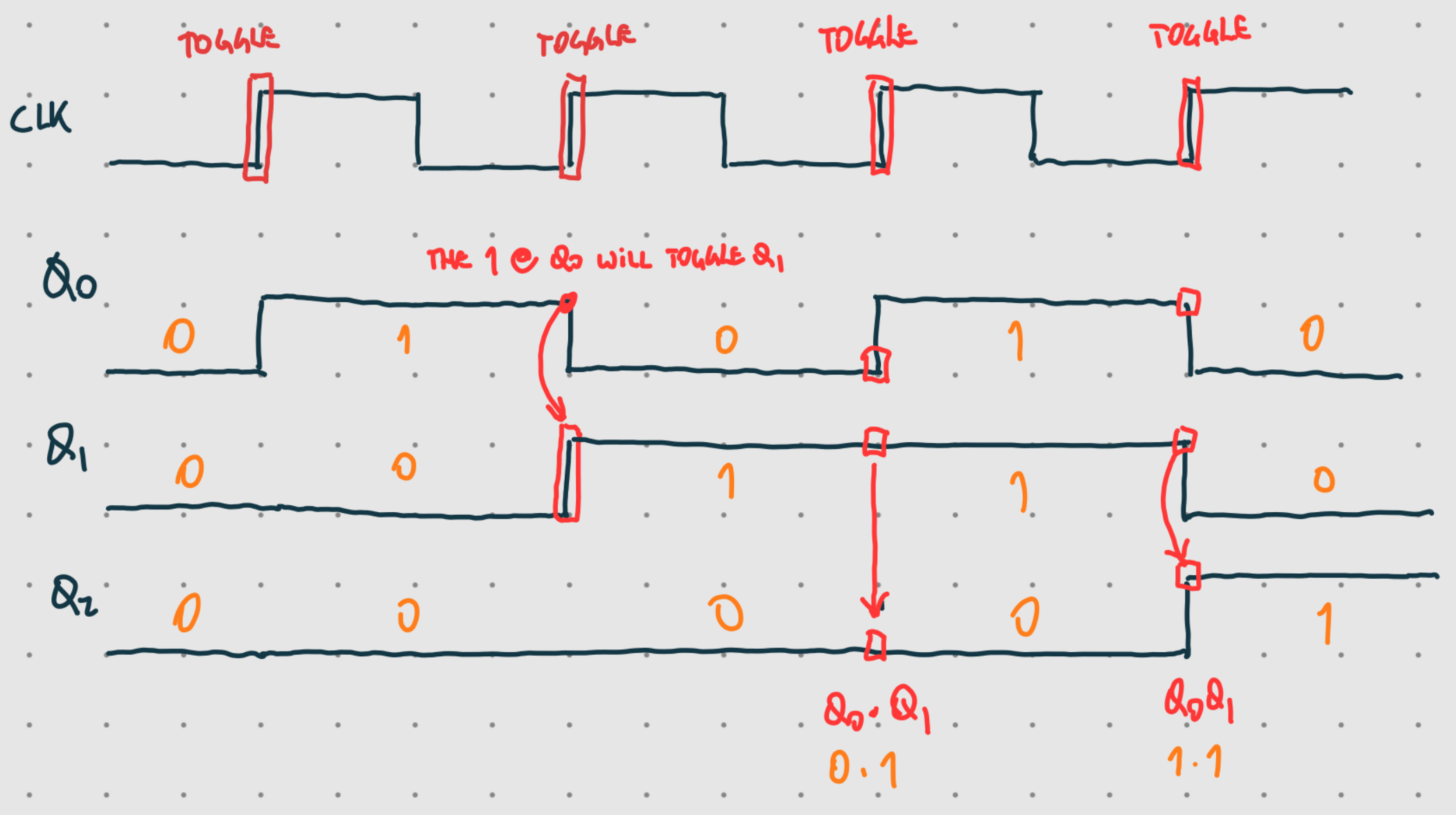Counters are digital circuits that increment or decrement by 1, often used in conjunction with a button that we press to change the value of our counter.
HDL implementation
Say we want an active-low parallel load loadn, and an asynchronous active-low reset resetn.
module count8 (clock, loadn, resetn, Q, D);
input clock, resetn, loadn;
input [7:0] D;
//..
always@(posedge clock, negedge resetn)
begin
if (resetn == 1'b0)
Q <= 'b0;
else if (loadn == 1'b0)
Q <= D;
else
Q <= Q + 1'b1;
end
endmoduleUnder the hood
Under the hood, counters are implemented with T flip-flops. We may add additional logic to only change the value if a signal is passed through (i.e., a button is pressed). Consider this 3-bit up-counter schematic:
 Here’s a sample timing diagram:1
Here’s a sample timing diagram:1

See also
- Rate divider, which uses counters
Footnotes
-
From Prof Korst’s lecture notes. ↩